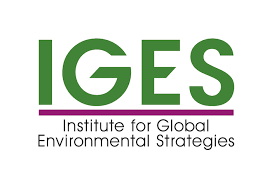Impact of climate change mitigation on Japan’s food security
A stable food supply is essential for human life. The sixth assessment report by the Intergovernmental Panel on Climate Change (IPCC) stated that climate change has already had diverse impacts on ecosystems and human systems, and that adverse impacts on agricultural crop production and water availability have been observed in some regions. If anthropogenic GHG emissions continue to increase, the adverse impacts induced by climate change will further intensify and become more frequent. On the other hand, many scenario analyses suggest that the stringent GHG emission reductions needed to meet the long-term temperature targets involve a trade-off with food security due to the large-scale deployment of land-intensive carbon dioxide removal (CDR) measures such as bioenergy with carbon capture and storage (BECCS) and afforestation.
Japan’s heavy dependence on food imports
Japan’s potential for bioenergy and afforestation is relatively limited, and the impact of domestic land use for these purposes may not be particularly serious. However, Japan imports large amounts of basic foods from overseas (Figure 1). For example, imports account for more than 80% of the country’s wheat, maize, and soybean supplies. Thus, how GHG emissions are reduced overseas could significantly affect Japan’s food security. We examined the impacts of climate mitigation efforts as well as climate change on Japan’s food security using Dynamic New Earth 21 plus (DNE21+), an Integrated Assessment Model (IAM).
(Source) Ministry of Agriculture, Forestry and Fisheries of Japan Data: Climate Solutions Explorer
Food security index (FSI)
Food security encompasses a broad concept, and many metrics have been proposed. In this study, we use the food security index (FSI), defined as food imports (in monetary terms) per GDP, to address the question of whether Japan will continue to have sufficient food at affordable prices for its economic capacity. In estimating food imports, we focused on wheat, maize, rice, and soybeans, as these are principal foods and the raw ingredients for processed products and feed. Consequently, even if their import value is small, the impact on Japan's overall food supply of any changes would be significant.
Food security index can be calculated as the sum of imports divided by GDP, where imports includes both the value of crops and the cost of shipping.
Scenarios
Three scenarios with different emission pathways—Reference, nationally determined contribution (NDC), and DO15 (Figure 2a)—and a no climate change (NoCC) scenario were considered. The NoCC scenario assumes that the socio-economy will evolve based on historical trends, while the climate remains as it was in 2000. Although this scenario is unrealistic, it was used to clarify the impacts of climate change and emission reduction efforts in the other scenarios. For the NoCC scenario, GDP and the international prices of crops and shipping freight after 2020 are exogenously based on forecasts. The international prices of wheat, maize, and soybeans, which temporarily soared to 2.5 to 3.2 times their 2000 levels due to COVID-19 and Russia’s invasion of Ukraine, peak in 2022. The prices remain higher than in the pre-invasion forecasts but decrease gradually through 2050 (Figure 2c). Shipping freight in 2030, 2040, and 2050 rises in association with an increase in international crop trading. For the other scenarios, changes from the NoCC scenario in international crop prices and shipping freight are estimated considering changes in crop prices in the crop-exporting countries, international crop market share, and energy prices for international shipping. GDP losses are estimated considering damages due to climate change and costs for emission reductions.
The climate mitigation scenarios are assumed to be as follows: In Reference, no specific emission reductions are conducted. In NDC, GHG emissions are reduced through 2030 according to the NDCs and remain relatively constant thereafter. In DO15, the 1.5 °C target is achieved owing to net-zero emissions in major developed countries and emission reductions with marginal abatement cost equalization across other countries.
In panels b and c, the marks indicate historical values through 2020. Data: Climate Solutions Explorer
Key findings
FSI trends in Japan
Japan’s total import of wheat, maize, rice, and soybeans accounted for 0.1% of GDP in 2020 (Figure 3). The FSI in 2020 was smaller than in 2010 but larger than in 2000, indicating that Japan's food security became more vulnerable compared to its level in 2000. In 2030, the FSI increases to 0.11% irrespective of the GHG emission reduction levels. The higher international crop prices after COVID-19 and Russia’s invasion of Ukraine (Figure 2c) could further increase Japan’s FSI. After 2030, the FSI will decrease owing to a decline in international crop prices, combined with a decrease in crop demand and GDP growth in Japan. In the NoCC scenario, food security in 2050 improves to its 2000 level. In the Reference scenario, the estimated FSI differs only slightly from that in the NoCC scenario, even considering the impact of climate change. This is because the impact of climate change varies by region and crop; a positive impact is expected for some crops and regions based on the CO2 fertilization effect and adaptations such as planting time shifts and variety changes.
Trade-off between climate mitigation and food security
In the NDC and DO15 scenarios, the estimated FSI is larger than in the NoCC and Reference scenarios, indicating a trade-off between GHG emissions reduction and an improvement in food security (Figure 3). The trade-off is particularly notable in 2040 and 2050 in the DO15 scenario.
Factors contributing to the FSI change
The principal factor contributing to the FSI increases in both the NDC and
DO15 scenarios is the increase in international crop prices due to
emission reduction efforts (Figure 4). Here, the land area for energy crop
production and afforestation expands in maize, soybean, and wheat
exporting countries such as the United States, Brazil, and Argentina,
leading to higher producer prices in these regions through increased land
rents. In the DO15 scenario, an increase in shipping freight due to
increases in the transportation energy prices associated with higher
carbon prices also contributes significantly to the FSI increase.
Although GDP losses in Japan due to climate change and emission reduction
efforts contribute to the increased FSIs, their contribution is expected
to be small compared to the factors mentioned above.
For reference, it is estimated that the producer prices of wheat, rice, maize, and soybeans in Japan will be higher than the prices of imported crops, even considering the increases in the prices of international crops and shipping freight in the NDC and DO15 scenarios. This suggests that while it will remain economically rational for Japan to continue to import major crops, measures will be needed to address the slowdown in improving Japan's food security resulting from the pursuit of temperature targets.
Addressing the trade-offs between climate mitigation and food security
These findings are based on a preliminary study, and further analyses for various scenarios and comparisons with evaluations based on other indicators are necessary. To assure better food security in Japan, improvements in utilization efficiency in the food supply chain (e.g., promoting efficient food production and food waste reduction) will be important in the short term. This could decrease the volume of crop imports and reduce food import costs regardless of fluctuations in international crop prices. In the medium- and long-term, it may be necessary to develop affordable emission reduction measures with lower land-use intensity and to make them available not only in Japan but also in crop-exporting countries in order to reduce the impact of climate mitigation on crop prices, transportation costs, and GDP loss. Such efforts would appear crucial to the simultaneous achievement of the temperature goals and favorable food security, not only in Japan but throughout the world.
Explore more: Japan dashboard.
References
-
Akimoto, K., Sano, F., Hayashi, A., Homma, T., Oda, J., Wada, K.,
Nagashima, M., Tokushige, K. & Tomoda, T. (2012)
Consistent assessments of pathways toward sustainable development and climate stabilization.
Natural Resources Forum, 36(4), 231-244
https://doi.org/10.1111/j.1477-8947.2012.01460.x -
Hayashi, A., Sano, F., Homma, T., Akimoto, K. (2023)
Mitigating trade-offs between global food access and net-zero emissions: The potential contribution of direct air carbon capture and storage.
Climatic Change
https://doi.org/10.1007/s10584-023-03528-x.
This research has received funding from the European Union’s Horizon 2020 research and innovation programme under grant agreement No 821471 (ENGAGE).
Key Insights
- The impact of climate mitigation and climate change on Japan’s food security is evaluated based on the food security index (FSI), defined as food imports (in monetary terms) per GDP.
- The estimated FSI is larger in the two considered climate mitigation scenarios than in a scenario that includes no specific emission reductions, indicating that climate mitigation will have a negative impact on Japan’s food security.
- The major factor contributing to the FSI increase is an increase in international crop prices due to emission reduction efforts. This means that the deployment of bioenergy (including bioenergy with carbon capture and storage [BECCS]) and afforestation in regions exporting major crops will lead to higher crop production costs and higher international crop prices.
- In the 1.5 ºC scenario, an increase in shipping freight due to an increase in energy price associated with higher carbon price will also contribute significantly to the increase in the FSI.
- These results suggest that the pursuit of temperature targets involves a trade-off with improvements in Japan's food security and that some response to this is necessary.
- In the short term, improvements in utilization efficiency in the food supply chain (e.g., promoting efficient food production and food waste reduction) may be essential. In the medium- and long-term, the development of affordable emission reduction measures with lower land-use intensity may be required.



